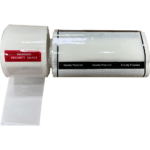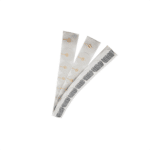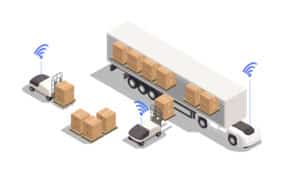In the realm of retail security, one of the most crucial innovations has been the Electronic Article Surveillance (EAS) tag. This device plays a significant role in safeguarding merchandise, deterring theft, and enhancing the overall shopping experience. Beyond its primary function as a security measure, the EAS tag has evolved, incorporating advanced technologies and features to meet the ever-changing demands of the retail landscape.
Evolution of EAS tag
The inception of EAS technology dates back several decades, rooted in the need for enhanced security measures within retail environments. Initially, EAS tags were rudimentary in design, primarily serving as a deterrent against theft through their conspicuous presence on merchandise. However, as retail theft tactics evolved, so too did the technology behind EAS tags. Here are the two main types of basic EAS tags.
Magnetic-based EAS tags:
Early iterations of EAS tags relied heavily on magnetic-based systems, wherein tags were affixed to merchandise and deactivated or removed at the point of sale using specialized magnetic detachers. While effective to some extent, these systems were susceptible to interference and tampering, prompting the need for more robust solutions.
Radiofrequency (RF) EAS tags:
The advent of Radio Frequency (RF) EAS tags marked a significant advancement in retail security technology. These tags utilize electromagnetic fields to detect unauthorized removal of tagged items from the store premises. RF EAS systems offer greater detection range and accuracy compared to their magnetic counterparts, making them a preferred choice for many retailers.


Modern innovations in EAS technology:
In recent years, the landscape of retail security has witnessed a surge in technological advancements, leading to the development of more sophisticated EAS solutions. These innovations aim not only to thwart theft but also to enhance operational efficiency and customer experience.
RFID integration:
Integrating Radio-Frequency Identification (RFID) technology with EAS systems has revolutionized how retailers manage their inventory and combat theft. RFID-enabled EAS tags not only serve as security devices but also provide valuable insights into merchandise movement, inventory levels, and consumer behavior.
Smart EAS tags:
Emerging technologies such as the Internet of Things (IoT) have paved the way for developing smart EAS tags equipped with sensors and connectivity features. These tags can communicate with centralized systems, allowing retailers to track individual items in real time, receive alerts for suspicious activity, and even engage in targeted marketing efforts based on customer preferences.
Conclusion:
The evolution of EAS tags underscores the relentless pursuit of innovation within the realm of retail security. From humble beginnings as simple deterrents against theft to sophisticated, interconnected systems capable of real-time tracking and analysis, EAS technology has come a long way. As retailers continue to adapt to evolving threats and consumer expectations, the role of EAS tags in safeguarding merchandise and enhancing the shopping experience will remain indispensable. By leveraging the latest advancements in technology, retailers can stay one step ahead in the ongoing battle against theft while simultaneously delivering seamless, personalized experiences to their customers.
FAQs
1. What is the frequency of an EAS tag?
The frequency of EAS tags commonly used is Radio Frequency (RF), operating at 8.2 MHz. In RF-based EAS systems, antennas communicate with active tags through a sweep at this frequency, facilitating effective detection and deterrence of theft in retail environments.
2. What is the purpose of an EAS tag?
The primary purpose of an EAS security tag is to act as a signal transmitter to protect merchandise. When attached to an item, it interacts with EAS antennas, triggering an alarm if someone attempts to remove the tagged merchandise without proper authorization. This serves as a deterrent against theft and helps to prevent shoplifting incidents in retail environments.
3. Do EAS tags have ink?
Yes, some EAS tags incorporate ink ampoules into their design for added security. These tags are available in both AM and RF frequencies, compatible with common EAS security systems. Additionally, ink dye pins can be added to existing EAS tags to provide an extra layer of protection against theft and deter potential shoplifters.
4. Are EAS tags reusable?
Yes, many EAS tags are reusable. They can be deactivated at the point of sale using a specialized device, allowing customers to leave the store without triggering alarms. Some retailers choose to reactivate EAS tags for reuse on returned or exchanged items.


































